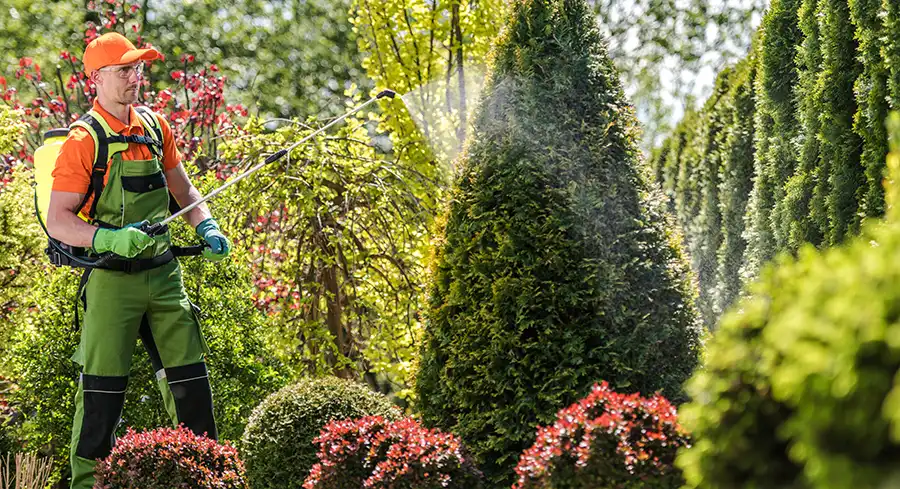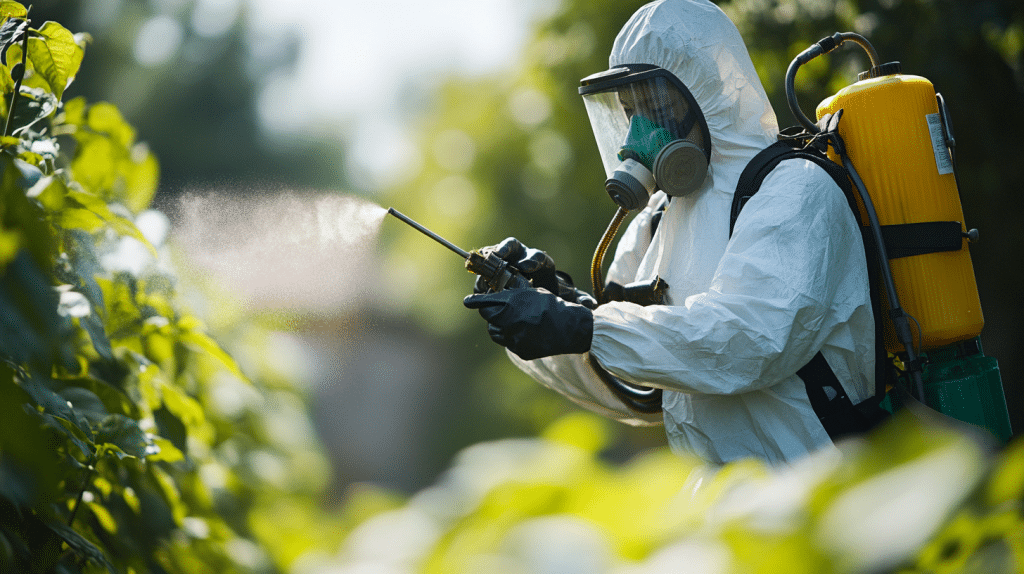As concerns over environmental sustainability grow, many homeowners and businesses are seeking pest control solutions that are both effective and eco-friendly. Traditional chemical pesticides, while often efficient, can lead to significant long-term damage to ecosystems, soil quality, water sources, and even human health.
These toxic substances can accumulate in the environment, harming beneficial insects, birds, and aquatic life, while also posing risks to pets and children. Fortunately, safe, sustainable, and long-lasting pest control options exist. These techniques use biological control agents, organic repellents, mechanical barriers, and holistic prevention to reduce damage.
By choosing environmentally safe pest control techniques, individuals can not only eliminate pest infestations but also contribute to preserving biodiversity and promoting a healthier planet.
Therefore, it is essential to ask the question of which method of pest control is safest for the environment and to investigate and debate various eco-friendly pest management strategies, including their advantages, efficacy, and optimal applications. Whether you are a homeowner looking for natural solutions or a business aiming to implement sustainable pest management, understanding these eco-friendly approaches can help you make informed and responsible choices.
The Best Environmentally Friendly Pest Control Methods
1) Biological Pest Control
As one of the most sustainable and eco-friendly methods, biological pest control relies on nature to balance pest populations. By introducing natural predators, parasites, or pathogens, this method eliminates pests without disrupting the environment or causing harm to beneficial organisms.
- Introduces beneficial insects like ladybugs to control aphid populations.
- Uses nematodes to eliminate soil-dwelling pests.
- Employs bacterial solutions such as Bacillus thuringiensis (Bt) to control mosquito larvae.
By relying on nature’s own mechanisms, biological pest control reduces the need for synthetic chemicals while maintaining ecological balance. Additionally, this method helps to prevent pesticide resistance in pest populations, making it a long-term solution for sustainable pest control.
2) Organic and Natural Pesticides
Unlike synthetic pesticides that often contain toxic chemicals, organic pesticides are derived from natural sources such as plants and minerals. These solutions break down quickly in the environment, minimizing contamination and reducing harm to non-target species.
- Essential oils like neem, peppermint, and citronella repel insects naturally.
- Diatomaceous earth dehydrates insects, leading to pest reduction.
- Boric acid provides an effective yet low-toxicity solution for ants and cockroaches.
Organic pesticides are particularly beneficial for households with children and pets, as they pose fewer health risks compared to conventional chemical treatments. Homeowners can also make DIY natural pesticides using everyday kitchen ingredients like garlic, vinegar, and citrus peels.
3) Integrated Pest Management (IPM)
Microbial Integrated Pest Management (IPM) is a holistic and strategic approach that combines multiple eco-friendly techniques for sustainable and comprehensive pest control. Instead of relying on a single method, IPM focuses on long-term prevention and sustainable pest management.
- Regular monitoring and identification of pests to apply targeted treatments.
- Cultural control methods like crop rotation and companion planting in gardens.
- Physical barriers such as screens, traps, and sealing entry points.
IPM minimizes reliance on chemical pesticides while ensuring long-term pest prevention. It also promotes education and awareness among homeowners and businesses, helping them implement eco-friendly pest control measures tailored to their specific environments.
4) Mechanical and Physical Pest Control
These methods involve non-toxic techniques to remove or prevent pests without chemicals. They are especially effective for individuals seeking chemical-free pest management solutions.
- Sticky traps and pheromone traps for monitoring and reducing insect populations.
- Ultrasonic repellents to deter rodents and insects.
- Heat or cold treatments to eliminate bedbugs and other resilient pests.
Mechanical and physical pest control techniques are widely used in organic farming, food storage facilities, and residential settings where chemical pesticides are not an option. While these methods may require consistent application, they offer a safe and sustainable alternative to synthetic pest control solutions.
5) Eco-Friendly Pest Prevention Techniques
The best way to control pests is to prevent infestations before they start. Implementing proactive eco-friendly measures can help maintain a pest-free environment without the need for harsh chemicals.
- Proper Waste Management: Dispose of garbage regularly and use sealed bins to prevent attracting pests.
- Natural Repellents: Use plants like lavender, basil, and mint to deter insects naturally.
- Home Maintenance: Seal cracks, fix leaks, and repair screens to block pest entry points.
By incorporating these preventive strategies, homeowners and businesses can significantly reduce the risk of pest infestations, ultimately minimizing the need for intervention while maintaining environmental sustainability.
Comparing Eco-Friendly Pest Control Methods
When choosing an eco-friendly pest control method, it is important to consider factors such as effectiveness, cost, ease of application, and long-term sustainability. Below is a comparison of different methods based on these key criteria:
|
Method |
Effectiveness |
Cost |
Ease of Use |
Long-Term Sustainability |
|---|---|---|---|---|
|
Biological Pest Control |
High |
Moderate |
Requires expertise |
Excellent |
|
Organic Pesticides |
Moderate |
Low to moderate |
Easy |
Good |
|
Integrated Pest Management |
High |
Moderate |
Requires monitoring |
Excellent |
|
Mechanical Control |
Moderate |
Low |
Easy |
Good |
|
Eco-Friendly Prevention |
High |
Low |
Easy |
Excellent |
Each method has its strengths and limitations. Biological pest control and IPM are highly effective and sustainable but may require specialized knowledge and initial investment. Organic pesticides and mechanical methods provide accessible alternatives, though they might need frequent application. Eco-friendly prevention techniques, while simple and cost-effective, work best when combined with other approaches to maintain a pest-free environment efficiently.
Why Choose Eco-Friendly Pest Control?
Pest control is not just about eliminating unwanted pests—it is also about choosing methods that align with a sustainable and responsible lifestyle. Eco-friendly pest control options provide effective ways to manage infestations while reducing environmental impact. Choosing these methods ensures a safer home, better public health, and a more balanced ecosystem.
Switching to environmentally safe pest control methods offers several benefits:
- Healthier Living Spaces: Reduces exposure to harmful chemicals for families and pets, creating a safer indoor environment.
- Protects Wildlife and Ecosystems: Preserves beneficial insects, birds, and aquatic life by avoiding toxic substances that disrupt biodiversity.
- Sustainable Pest Prevention: Encourages long-term solutions rather than short-term fixes, preventing pest problems from recurring.
- Reduced Pollution: Lowers the contamination of soil, air, and water sources, contributing to a cleaner planet.
- Compliance with Green Living Standards: Many eco-friendly methods align with sustainability initiatives, making them suitable for households and businesses looking to reduce their carbon footprint.
By opting for environmentally responsible pest control methods, individuals and businesses contribute to a more sustainable future while effectively managing pest issues.
How to Implement Eco-Friendly Pest Control at Home
Adopting eco-friendly pest control practices at home is not only beneficial for the environment but also helps maintain a safe and healthy living space. By integrating natural prevention techniques and sustainable pest control measures, homeowners can reduce the need for chemical interventions. Below are some of the most effective strategies to implement at home:
Maintain Cleanliness
Regularly clean kitchens, dispose of waste properly and store food in sealed containers. Keeping a clean home helps eliminate food sources that attract pests, reducing the need for additional pest control measures. Sweeping, vacuuming, and mopping regularly can further prevent infestations by eliminating crumbs and debris that attract pests.
Eliminate Entry Points
Seal cracks, fix leaks, and install window screens to prevent pest access. Many pests enter homes through tiny gaps, so weather-stripping doors and sealing around pipes and vents can further minimize intrusion. Regular inspections of walls, roofs, and basements can help identify potential entry points before they become a larger issue.
Use Eco-Friendly Sprays and Solutions
Opt for organic pest repellents instead of synthetic pesticides. Consider making DIY solutions using vinegar, baking soda, or essential oils to deter pests naturally without harming the environment. Spraying diluted neem oil on plant leaves and infested areas can help keep pests at bay without introducing toxins into your home.
Encourage Natural Predators
Attract birds, frogs, and beneficial insects to keep pest populations under control. For example, setting up bird feeders or nesting boxes can invite insect-eating birds like swallows and sparrows to help with pest control. Additionally, planting nectar-rich flowers can attract pollinators and natural pest controllers such as bees and butterflies.
Improve Landscaping Practices
Trim overgrown bushes and trees near your home to reduce hiding spots for pests. Consider planting pest-repelling plants such as marigolds, chrysanthemums, and rosemary around your property to naturally deter insects. Installing gravel or stone borders instead of mulch near your home’s foundation can also prevent insect nesting.
Ensure Proper Ventilation
Proper airflow and moisture control help prevent infestations of mold-loving pests like silverfish and cockroaches. Using dehumidifiers in damp areas can reduce the appeal of your home to certain pests. Additionally, fixing leaky pipes and ensuring proper drainage outside your home can help prevent standing water, which attracts mosquitoes and other insects.
Choosing the Right Eco-Friendly Pest Control Service

Finding the right eco-friendly pest control service is essential for managing infestations effectively while minimizing environmental impact. As awareness of sustainability grows, more pest control companies are offering green alternatives that prioritize eco-conscious solutions. However, not all providers adhere to the same standards, so it’s crucial to evaluate different factors before selecting a service.
When choosing an eco-friendly pest control service, consider the following:
- Use of Non-Toxic Treatments: Ensure the company uses organic, biodegradable, or non-toxic pest control solutions that do not harm the environment or human health.
- Adherence to Integrated Pest Management (IPM) Practices: A reputable company should follow IPM principles, which emphasize prevention, monitoring, and eco-conscious treatment strategies.
- Certifications and Environmental Compliance: Look for pest control services that hold eco-friendly certifications, such as GreenPro or EcoWise, to confirm their commitment to sustainable pest management.
- Transparency and Customization: A reliable provider should be transparent about their methods and willing to tailor their approach to your specific pest problem and environmental concerns.
- Customer Reviews and Reputation: Research customer feedback and reviews to gauge the effectiveness and ethical standards of the service provider.
By selecting a pest control service that aligns with these eco-friendly principles, you ensure a safer, more sustainable approach to pest management for your home or business. Investing in green pest control methods protects not only your living space but also the broader ecosystem.
FAQs
1. Are natural pest control methods as effective as chemical pesticides?
Yes, many natural pest control methods are just as effective as chemical pesticides when applied correctly. Techniques such as biological control and Integrated Pest Management (IPM) provide long-term solutions by targeting pests in a way that prevents future infestations.
2. What is the most eco-friendly way to get rid of rodents?
The safest eco-friendly rodent control methods include using humane traps, sealing entry points, and employing ultrasonic repellents. Encouraging natural predators like owls can also help reduce rodent populations without harming the environment.
3. How can I prevent pests naturally without using any chemicals?
You can prevent pests naturally by maintaining cleanliness, sealing entry points, using essential oils as natural repellents, and introducing beneficial insects like ladybugs. Physical barriers like traps and mesh screens also help keep pests at bay.





















